Endoscopic Sinus Surgery Optimizing Outcomes and Avoiding Failures
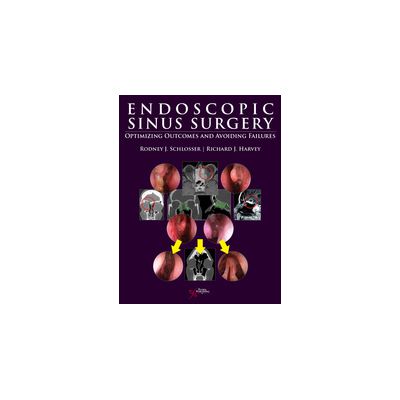
Preț: 735,00 lei
Disponibilitate: în stoc la furnizor
Autor: Rodney Schlosser, MD, Richard Harvey, MD
ISBN: 978-1-59756-430-4
Editura: Plural Publishing
Anul publicarii: 2013
Pagini: 384
Categoria: OTOLARYNGOLOGY & HEAD and NECK SURGERY
DESCRIERE
The goal of this book is to highlight areas from the broad spectrum of rhinology, beginning with the initial history and physical examination through the diagnostic work up, medical and surgical management and identification of potential pitfalls that may arise in order to minimize treatment failures. The authors of these chapters represent a generation of dedicated rhinologists who build upon the contribution to the field by pioneers in rhinology. They have provided their expertise and insight into common mistakes in order to aid the reader in improving treatment outcomes for their patients.
FROM THE PREFACE
Since the 1990s, the subspecialty of rhinology has evolved faster than any other area within otolaryngology. Only in recent history, the primary pathophysiology of chronic rhinosinusitis was be believed to be primarily a result of structural obstruction of the osteomeatal complex with subsequent bacterial infection. Treatment algorithms revolved around systemic antibiotics and medical failures were treated with removal of diseased mucosa using non-physiologic surgical approaches. We have now gained a better understanding of the heterogeneous nature of chronic rhinosinusitis and the complex interaction between local and systemic immunity, impaired mucociliary clearance and the potential role for a variety of external insults to include bacteria, fungi, and other noxious stimuli. While surgery still plays a major role in the treatment of inflammatory disease, it is now performed in a physiologic fashion and its role as an adjuvant to aid in the delivery of novel topical therapies is better appreciated.
In parallel with technological advancements for use in inflammatory disorders, rhinologists pushed the envelope in the surgical treatment of neoplastic disorders of the skull base and paranasal sinuses. Minimally invasive approaches in collaboration with other specialities, notably ophthalmologists and neurosurgeons, have resulted in the nascent field of neurorhinology, which is still in its infancy and will undoubtedly continue to evolve.
In spite of these tremendous advances in rhinology and greatly improved success, doctors are still faced with difficult patients and failures of standard approaches. If we do not learn from our failures, we are destined to repeat them.
Table of Contents
Chapter
1. History and examination
Luke Rudmik and Timothy L. Smith
2. The CRS Triangle: Understanding the Causes of Chronic Rhinosinusitis
Richard J. Harvey and Peter Earls
3. Contribution of Systemic Disease
Richard Douglas and Andrew Wood
4. Radiologic evaluation
Katrina Chaung, Randy M. Leung, and Rakesh K. Chandra
5. Pre-ESS medical therapy
Wytske J. Fokkens and Lefteris Margaritis
6. Topical therapies and Chronic Rhinosinusitis: The Role of Topical Therapies in Improving Sinus Surgical Outcomes
Alkis J. Psaltis and Richard Harvey
7. Systemic Medical Therapies
Thomas S. Higgins and Joseph K. Han
8. Advances in Surgical Navigation and New Technology for Rhinologic Surgery
Ryan Manz and Raj Sindwani
9. Balloon Catheter Dilation
Nithin D. Adappa, Jeremy Reed, and James N. Palmer
10. Perioperative Bleeding and Vascular Control
Daniel Timperley
11. Proficient ESS
Richard J. Harvey and Rodney J. Schlosser
12. Common Errors in Sinus Surgery
Zachary M. Soler and Michael P. Platt
13. Managing Intraoperative Complications in Endoscopic Sinus Surgery
Sarah K. Wise and John M. DelGaudio
14. Septal and Turbinate Surgery
Dan Robinson and Raymond Sacks
15. Postoperative Care Regimens
Luke Rudmik and Timothy L. Smith
16. Use of Modified Lothrop/Frontal Drillout/Draf 3 for Failed Frontal Sinusotomy
Yuresh S. Naidoo and Peter-John Wormald
17. Surgical Salvage of the Dysfunctional Sinus
Eric W. Wang and Rodney J. Schlosser
18. Failures in pediatric Chronic Rhinosinusitis
David Chin and Richard J. Harvey
19. Cystic Fibrosis Sinusitis
Alexandra E. Kejner and Bradford A. Woodworth
20. Orbital and Lacrimal Surgery
Raymond Sacks and Dan Robinson
21. Optimizing outcomes in endoscopic skull base surgery
Adam M. Zanation
22. Avoiding ESS related litigation
Rodney J. Schlosser
FROM THE PREFACE
Since the 1990s, the subspecialty of rhinology has evolved faster than any other area within otolaryngology. Only in recent history, the primary pathophysiology of chronic rhinosinusitis was be believed to be primarily a result of structural obstruction of the osteomeatal complex with subsequent bacterial infection. Treatment algorithms revolved around systemic antibiotics and medical failures were treated with removal of diseased mucosa using non-physiologic surgical approaches. We have now gained a better understanding of the heterogeneous nature of chronic rhinosinusitis and the complex interaction between local and systemic immunity, impaired mucociliary clearance and the potential role for a variety of external insults to include bacteria, fungi, and other noxious stimuli. While surgery still plays a major role in the treatment of inflammatory disease, it is now performed in a physiologic fashion and its role as an adjuvant to aid in the delivery of novel topical therapies is better appreciated.
In parallel with technological advancements for use in inflammatory disorders, rhinologists pushed the envelope in the surgical treatment of neoplastic disorders of the skull base and paranasal sinuses. Minimally invasive approaches in collaboration with other specialities, notably ophthalmologists and neurosurgeons, have resulted in the nascent field of neurorhinology, which is still in its infancy and will undoubtedly continue to evolve.
In spite of these tremendous advances in rhinology and greatly improved success, doctors are still faced with difficult patients and failures of standard approaches. If we do not learn from our failures, we are destined to repeat them.
Table of Contents
Chapter
1. History and examination
Luke Rudmik and Timothy L. Smith
2. The CRS Triangle: Understanding the Causes of Chronic Rhinosinusitis
Richard J. Harvey and Peter Earls
3. Contribution of Systemic Disease
Richard Douglas and Andrew Wood
4. Radiologic evaluation
Katrina Chaung, Randy M. Leung, and Rakesh K. Chandra
5. Pre-ESS medical therapy
Wytske J. Fokkens and Lefteris Margaritis
6. Topical therapies and Chronic Rhinosinusitis: The Role of Topical Therapies in Improving Sinus Surgical Outcomes
Alkis J. Psaltis and Richard Harvey
7. Systemic Medical Therapies
Thomas S. Higgins and Joseph K. Han
8. Advances in Surgical Navigation and New Technology for Rhinologic Surgery
Ryan Manz and Raj Sindwani
9. Balloon Catheter Dilation
Nithin D. Adappa, Jeremy Reed, and James N. Palmer
10. Perioperative Bleeding and Vascular Control
Daniel Timperley
11. Proficient ESS
Richard J. Harvey and Rodney J. Schlosser
12. Common Errors in Sinus Surgery
Zachary M. Soler and Michael P. Platt
13. Managing Intraoperative Complications in Endoscopic Sinus Surgery
Sarah K. Wise and John M. DelGaudio
14. Septal and Turbinate Surgery
Dan Robinson and Raymond Sacks
15. Postoperative Care Regimens
Luke Rudmik and Timothy L. Smith
16. Use of Modified Lothrop/Frontal Drillout/Draf 3 for Failed Frontal Sinusotomy
Yuresh S. Naidoo and Peter-John Wormald
17. Surgical Salvage of the Dysfunctional Sinus
Eric W. Wang and Rodney J. Schlosser
18. Failures in pediatric Chronic Rhinosinusitis
David Chin and Richard J. Harvey
19. Cystic Fibrosis Sinusitis
Alexandra E. Kejner and Bradford A. Woodworth
20. Orbital and Lacrimal Surgery
Raymond Sacks and Dan Robinson
21. Optimizing outcomes in endoscopic skull base surgery
Adam M. Zanation
22. Avoiding ESS related litigation
Rodney J. Schlosser
Categorii de carte
-Comandă specială
-Edituri
-Promo
-Publicaţii Callisto
-Cărţi noi
-- 1134,00 leiPRP: 1260,00 lei
- 1275,12 leiPRP: 1449,00 lei
- 472,50 leiPRP: 525,00 lei
Promoţii
-- 409,50 leiPRP: 546,00 lei
- 1134,00 leiPRP: 1260,00 lei
- 1275,12 leiPRP: 1449,00 lei



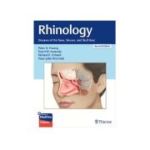
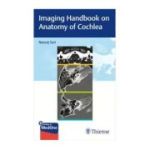

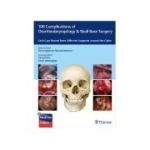
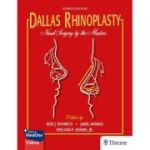



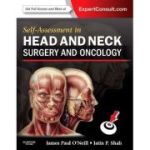

REVIEW-URI